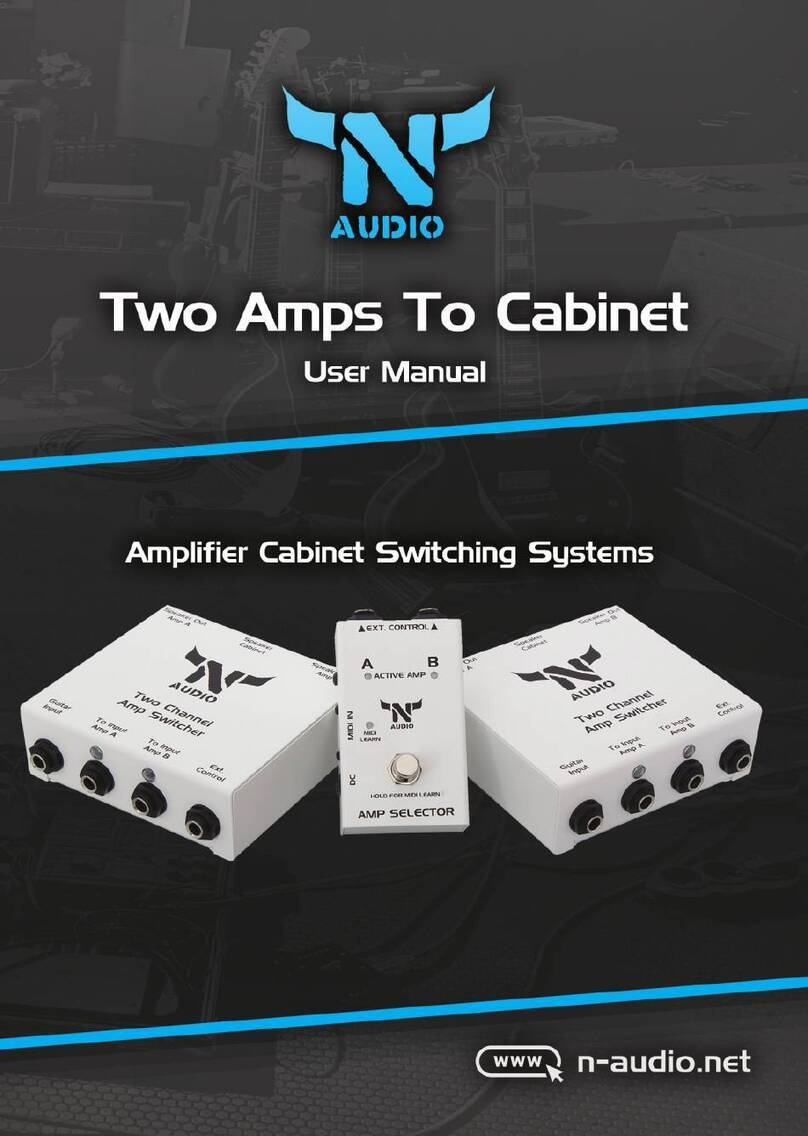
Introduction
The main function of N-audio 8X7 and 4X4 systems is to switch between amplifiers and cabinets
quickly without routing cables manually. It is a quick routing system that can handle up to 8 (4)
amplifiers, an external power attenuator, and up to 7 (4) speaker cabinets. It is a good choice
when you have a few amplifiers and cabinets and want to make a quick comparison between
them, or just choose your favorite guitar tone. Also, this system works great for studios or guitar
shops where a lot of equipment has to be tested or routed quickly.
The unit works with any amplifier including tube amplifiers, solid-state amplifiers, and bridged
mono amplifiers. There are a lot of hardware and software logic built-in protections to keep your
amplifiers safe. The whole signal path contains relays only to give a pure tone. There is no active
electronics except for the tuner out. Special circuit implementation is used to reduce pops when
switching. There are no dead spots when switching between the amplifiers or the cabinets giving
perfect work on stage or studio recording.
Controls and connectors
1. A guitar input jack is input from your guitar or pedalboard.
2. The MUTE/MIDI learn button has two main functions:
- Mutes the whole system by turning off all enabled devices.
- Acts as MIDI learn for adding the current preset to a MIDI preset.
3. The amplifier buttons correspond to each amplifier connected to the device.
Pressing a button routes the signal from the guitar through each selected amplifier.
4. The power attenuator button enables an external power attenuator.
5. The cabinet buttons send signals to cabinets.
6. The power button turns on the device.
Back panel
1. A universal IEC mains input.
2. Outputs to cabinets.
3. Send/return connectors for an external power attenuator.
4. Inputs from the speaker outputs from your amplifiers where normally you plug your cabinet.
5. MIDI IN and MIDI OUT connectors. MIDI out works as MIDI thru.
6. Outputs to connect the inputs of the amplifiers where normally you plug your guitar.
7. Guitar in input is a master input, and it disables the front input if used.
8. Tuner out output for an external tuner. This buffered output works all the time.
Getting started
The whole system uses a lot of cables. Ensure that you have the right cables for your needs:
- All signal cables between the “to amplifiers inputs” and the input of your amplifier where
normally you connect your guitar, the inputs, and the tuner output must be guitar shielded cables.
Those cables are usually used when you connect the guitar to the amplifier.
- All cables between “from amplifiers speaker outputs”, power attenuator send and return, and
“outputs to cabinets” must be proper speaker high current cables. Use quality 2×1.5mm2 or
2×2,5mm2 cables.
- The mains power cord is a standard IEC type. Use the provided cord.
Front panel


























